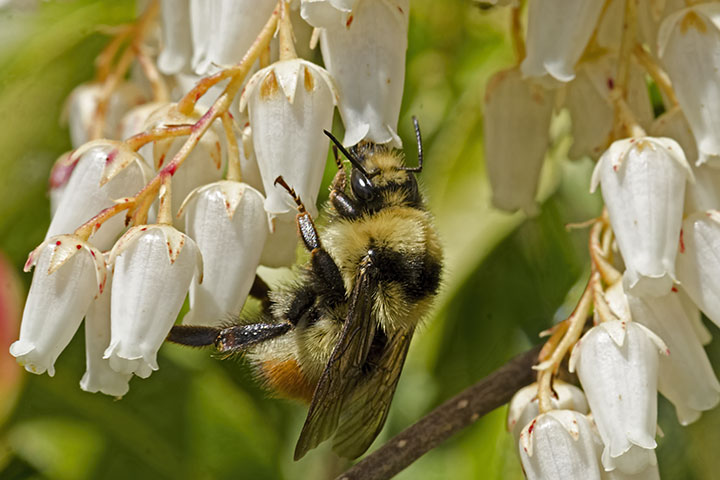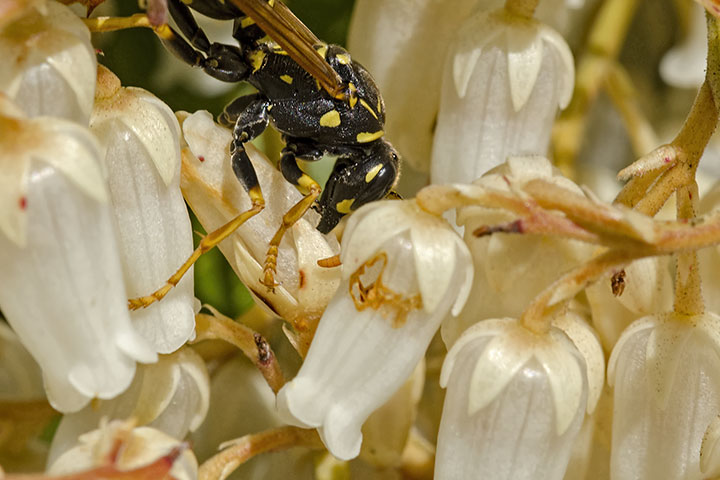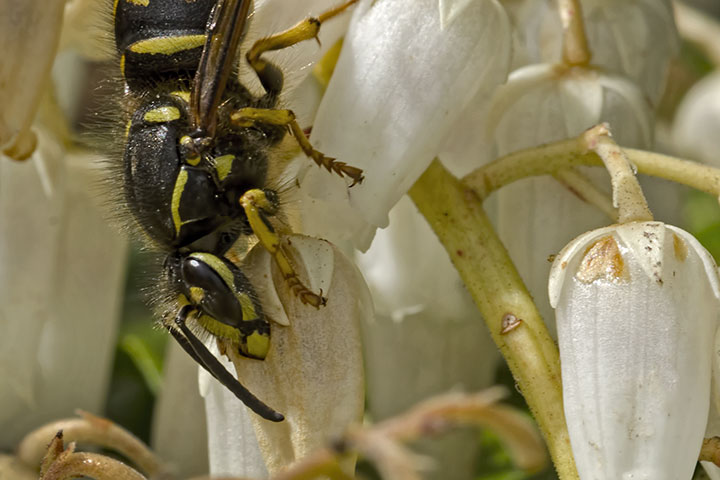Flowers produce nectar for one reason: to entice insects to brush against their reproductive organs and, in doing so, to transfer pollen from one flower to the next. To accomplish this, flowers are structured such that the insect must pass the anthers and stigma to reach the nectary (where the nectar is produced). That is the contract: insects pay for the nectar by providing pollination.
This system works for the benefit of both flowers and insects. It works, that is, until the coming of larcenists. These break-and-enter specialists bypass pollination and just steal the nectar. The only local nectar robbers I have spotted are wasps.
Most bees and flies are either small enough or have long enough tongues to reach the nectar from the lips of a tubular flower and so rub against the flower’s reproductive organs. This Bombus melanopygus is thrusting its tongue into the opening of a Pieris japonica. The bumble bee is living up to its contract with the flower.

Not so, this paper wasp. It is about to rob the flower—to take nectar and give nothing in return. Wasps lack the long tongue needed to reach the nectary from the flower’s opening, but they do have powerful jaws. Their solution is to break and enter: to bite a hole through a petal. This Polistes dominula has just started to bite. Seen on another flower (below its head) is a older hole carved to reach the nectary.

An aerial yellowjacket (Dolichovespula arenaria) demonstrates the entering portion of break and enter: it sticks its jaws though the hole it created and takes the nectar, bypassing the flower’s reproductive organs.

So, Alistair – where do humming birds fit into this equation? It would appear to me that they would be robbers as only their long beaks enter the flower.
Jean, thank you for pointing out that the contract some flowers has is with birds. And thank you to Peter Mciver (below) for explaining how the majority of hummingbirds live up to the contract. I note that bombylius (fly) has a particularly long proboscis (just as the hummingbird has a long bill), but I have nevertheless seen its facial hair covered in pollen.
Hi, Jean,
No, hummingbirds are very effective pollinators. Pollen grains are sticky, and stick to the side of the beak. Many South American plants and hummingbirds have co-evolved so that the plant can only be pollinated by hummingbirds, and the hummingbird beak is shaped so that it best fits a certain plant species, although the birds are much more adaptable that the plants, and can always feed on other flowers also. Some small-billed hummingbirds are nectar robbers at times, when they visit plants with corollas too long for their beaks.